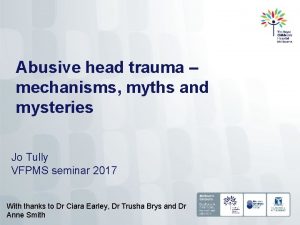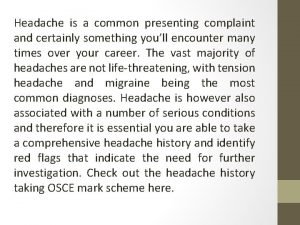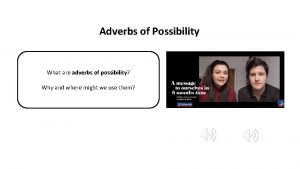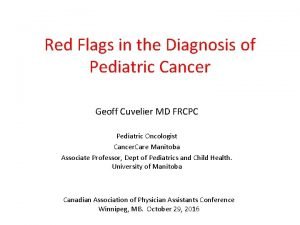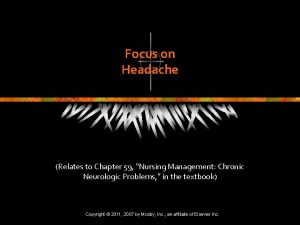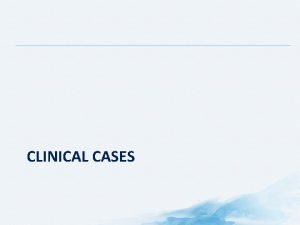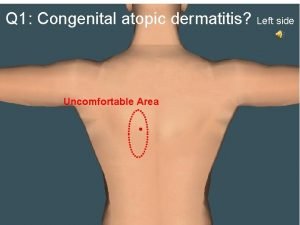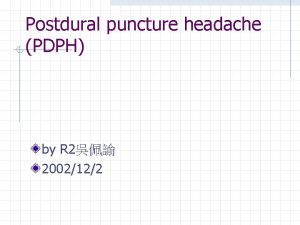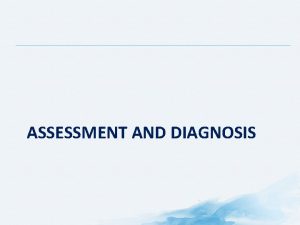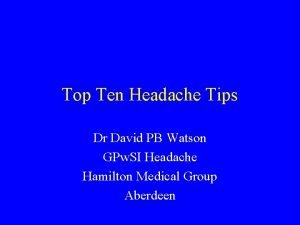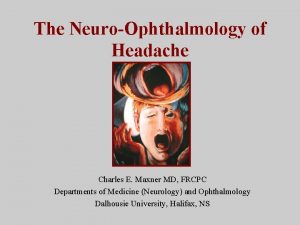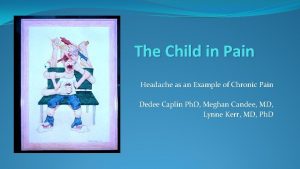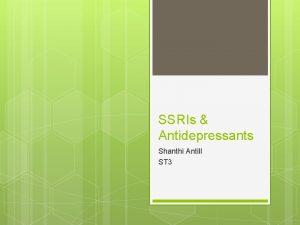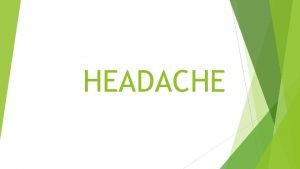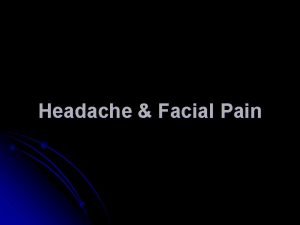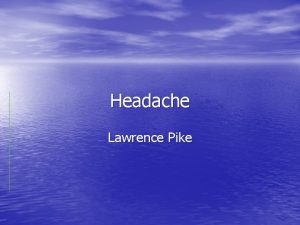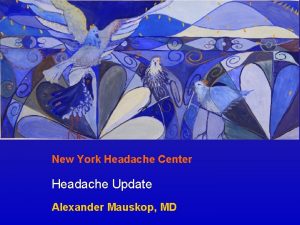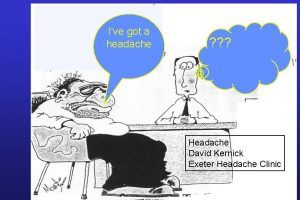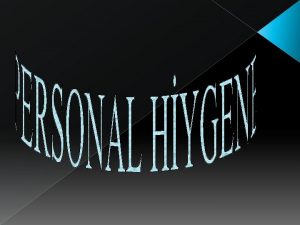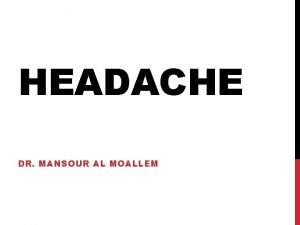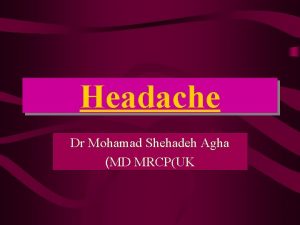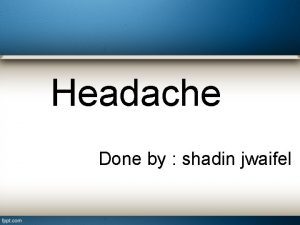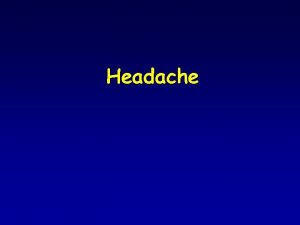Headache is a common presenting complaint and certainly

















- Slides: 17

Headache is a common presenting complaint and certainly something you’ll encounter many times over your career. The vast majority of headaches are not life-threatening, with tension headache and migraine being the most common diagnoses. Headache is however also associated with a number of serious conditions and therefore it is essential you are able to take a comprehensive headache history and identify red flags that indicate the need for further investigation. Check out the headache history taking OSCE mark scheme here.

HPC PAST MEDICAL HX DRUG HX FAMILY HX SOCIAL HX SYSTEMIC ENQUIRY INTERACTIVE MARK SCHEME (PDF) Opening the consultation Introduce yourself – name/role

Allow the patient time to answer, trying not to interrupt or direct the conversation. Facilitate the patient to expand on their presenting complaint if required. “Ok, so tell me more about that” “Can you explain what that pain was like? ”

History of presenting complaint The aim now is to encourage the patient to give further details about their complaint to allow you to narrow the differential diagnosis. One useful way to gain further details about a headache is to use the SOCRATES system of questions as shown below.

Site – unilateral (e. g. migraine) / frontal bilateral (e. g. tension headache)

Onset: Was the onset acute or gradual? (sudden onset “thunderclap” headache is suggestive of subarachnoid haemorrhage)

Character – aching / throbbing / pounding / pulsating / pressure / pins and needles / stabbing

Radiation – neck (meningitis) / face (e. g. trigeminal neuralgia) / eye (e. g. acute closed angle glaucoma)

Associated symptoms: Nausea/vomiting – may suggest raised intracranial pressure (ICP) Visual disturbance – aura related / intracranial lesion / bleeding / stroke Photophobia – raised ICP / meningitis

Neck stiffness – meningitis (may be related to infection or subarachnoid haemorrhage) Fever – suggestive of an infective process (e. g. bacterial meningitis/abscess) Rash – non-blanching purpuric rash may indicate meningococcal sepsis Weight loss – suggestive of malignancy – consider cerebral metastases

Sleep disturbance – headaches causing sleep disturbance are concerning (raised ICP) Temporal region tenderness – consider temporal arteritis Neurological deficits – weakness / sensory disturbance / impaired coordination / cognitive symptoms / altered level of consciousness – consider space-occupying lesions / intracranial bleeding / stroke

Timing: Duration of headache? Is it episodic? Any clear pattern? Diurnal variation? Chronic headaches – in a month of 30 days, for how many of those days would the patient have a headache?

Exacerbating/relieving factors: Exacerbating factors – are there any obvious triggers for the symptom? (e. g. caffeine / codeine / stress / postural change) Relieving factors – does anything appear to improve the symptoms (e. g. improvement upon lying flat suggestive of reduced ICP).

Severity: Ask the patient to rate the pain on a scale of 1 -10 Is the pain getting worse? How is it impacting their daily life?

Red flags within a headache history are many and varied, so familiarise yourself with common patterns. A headache of sudden onset, reaching maximum intensity by five minutes (suggestive of subarachnoid haemorrhage) Fever with a worsening headache, meningeal irritation and change in mental status (viral/bacterial meningitis)

New-onset focal neurological deficit, personality change or cognitive dysfunction (intracranial haemorrhage/ischaemic stroke/space occupying lesion) Decreased level of consciousness Head trauma (more significant if within the last three months)

Headache which is posture dependent (e. g. worse on lying down and coughing with raised ICP). Headache associated with tenderness in the temporal region (unilateral or bilateral) and jaw claudication (temporal arteritis) Headache associated with severe eye pain/blurred vision/nausea/vomiting/red eye (acute angle closure glaucoma)
 Systematic review in history taking
Systematic review in history taking Presenting complaint
Presenting complaint Presenting complaint
Presenting complaint Possibility adverbs
Possibility adverbs Certainty factor method
Certainty factor method Certainly there be that delight in giddiness
Certainly there be that delight in giddiness Fever and headache
Fever and headache Pediatric headache red flags
Pediatric headache red flags How to apply for leave in infosys
How to apply for leave in infosys Headache pain chart
Headache pain chart Headache red flags
Headache red flags Right side headache
Right side headache Post dural puncture headache
Post dural puncture headache Snoop headache criteria
Snoop headache criteria Migraine after effects symptoms
Migraine after effects symptoms Ophthalmoplegic migraine
Ophthalmoplegic migraine Headache
Headache Anxiety headache
Anxiety headache

